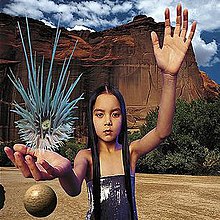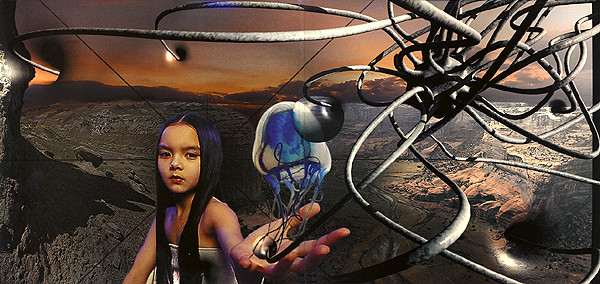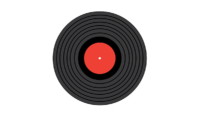30 Years of Lifeforms

Of all the landmark albums released in 1994, there is one thing you can be sure of, the likes of Parklife, Definitely Maybe, The Division Bell and Dummy will occupy a lot more column inches and blog pages than Lifeforms, and I think that’s a shame. It’s one of the most adventurous, inspiring and underrated albums of the 1990’s. Released 30 years ago today, The Future Sound of London’s second LP was a work of great imagination, bridging the gap between techno – and electronic dance music in general – and ambient, psychedelia and kosmische, even building bridges to the distant realms of prog rock and guitar-based indie.
Building upon the cosmic, ambient template bought to prominence by The Orb, as well as FSOL’s own hit single, Papua New Guinea, without even listening to a note of the album you could get a small sense of what you were about to hear, just by reading the list of guest musicians, which included Robert Fripp, Talvin Singh, Ozric Tentacles and Curve’s Toni Halliday.
Lifeforms is a world all of it’s own, a living, breathing creative organism that could seemingly sprout off-shoots at will. One of these, the seven-part Lifeforms single, featured the vocals of Elizabeth Fraser, thus ensuring that another fanbase would sit up and take note. The single then became a hit, the futuristic video of which even appeared on Top Of The Pops, albeit in truncated form. This creative cycle would eventually spawn the dark, dystopian Dead Cities album two years later, and if Lifeforms was an idyllic and leisurely afternoon walk through a lush, green woodland, then Dead Cities was the tense walk home beneath darkening skies, through the wrong end of town, only to find that your house had been bulldozed by Britpop.

The music of Lifeforms had a quality that I’d never heard in electronic music before, that of sounding both synthetic and organic. The attendant, and dazzlingly good artwork by Buggy G Riphead – aka Mark McClean – had that same quality, seeming both natural and unnatural. Between them, FSOL and Riphead had created an alternative world whose lifeforms seemed vaguely familiar yet entirely alien, whereas the figurehead of this otherworld, the dark haired, witch-girl seen on the album’s front cover and in the video, seemed completely real. What added to the surreal nature of this place was the way that, with the exception of the girl, every living thing seemed to be floating, as if either underwater or that gravity was behaving differently somehow.
When it was first released I often played Lifeforms while we were decorating the house that we’d just moved into, and upon reflection perhaps it was the colour and vibrancy of both the music and the artwork that influenced the decision to ditch the dull, uninspiring magnolia paint with which we had covered the landing and hallway in favour of painting the next room red. I liked it because it wasn’t just an album of tunes, it was an experience, an immersive, conceptual existence played out over 2 discs and a video, if you were lucky enough to own a copy of the VHS.
Maybe the album doesn’t get mentioned enough because FSOL aren’t The Orb, or that it was released by Virgin Records, and not Warp, a label at which it would have been completely at home at, alongside a catalogue that would go on to include such other notable ambient electronic masterworks as Music Has The Right to Children, Oversteps and Selected Ambient Works. Either way, let’s hear a Birthday round of applause for Lifeforms, and hopefully there will be plenty more words written about it in the weeks, months and years to come, and that it’s legacy will extend far beyond being responsible for a red front room.



